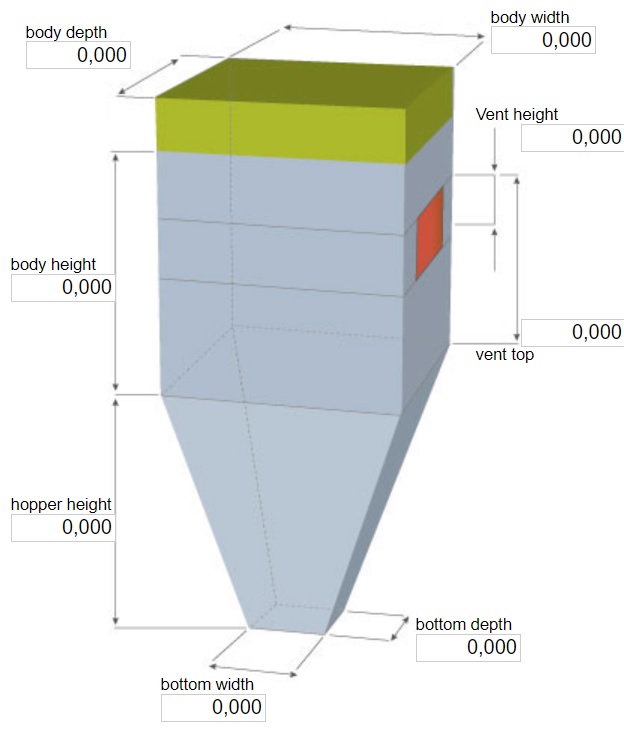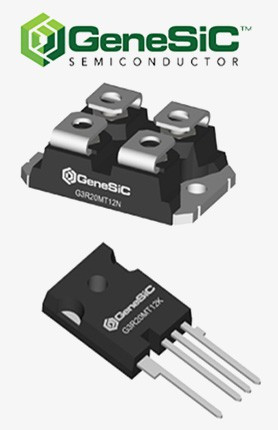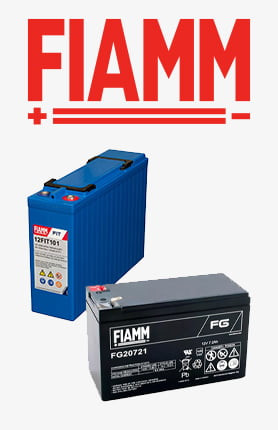Musíte být přihlášen
-
moreX
-
Komponenty
-
-
Category
-
Polovodiče
- LED diody
- Tyristory
- Elektroizolační moduly
- Přemosťovací usměrňovače
-
Tranzistory
- Tranzistory | GeneSiC
- SiC MOSFET moduly | Mitsubishi
- SiC MOSFET moduly | STARPOWER
- Moduly ABB SiC MOSFET
- Moduly IGBT | MITSUBISHI
- Tranzistorové moduly | MITSUBISHI
- Moduly MOSFET | MITSUBISHI
- Tranzistorové moduly | ABB
- Moduly IGBT | POWEREX
- Moduly IGBT | INFINEON (EUPEC)
- Polovodičové prvky z karbidu křemíku (SiC)
- Go to the subcategory
- Ovladače brány
- Bloky napájení
- Go to the subcategory
- Měniče proudu a napětí LEM
-
Pasivní součásti (kondenzátory, rezistory, pojistky, filtry)
- Rezistory
-
Pojistky
- Miniaturní pojistky pro elektronické obvody řady ABC a AGC
- Trubkové rychle působící pojistky
- Pojistkové vložky s časovým zpožděním s charakteristikami GL / GG a AM
- Ultrarychlé pojistkové články
- Rychle působící pojistky (britský a americký standard)
- Rychle působící pojistky (evropský standard)
- Pojistky pojezdu
- Pojistkové vložky vysokého napětí
- Go to the subcategory
-
Kondenzátory
- Motorové kondenzátory
- Elektrolytické kondenzátory
- Filmové kondenzátory
- Výkonové kondenzátory
- Kondenzátory pro stejnosměrné obvody
- Kondenzátory korekce účiníku
- Vysokonapěťové kondenzátory
- Indukční topné kondenzátory
- Kondenzátory pulsu a energie
- DC LINK kondenzátory
- Kondenzátory pro AC / DC obvody
- Go to the subcategory
- EMI filtry
- Superkondenzátory
- Přepěťová ochrana
- Go to the subcategory
-
Relé a stykače
- Teorie relé a stykačů
- 3fázová střídavá polovodičová relé
- 3fázová střídavá polovodičová relé
- Regulátory, ovládací prvky a příslušenství
- Měkké spouštění a reverzační stykače
- Elektromechanická relé
- Stykače
- Otočné spínače
-
Jednofázová střídavá polovodičová relé
- Jednofázová střídavá polovodičová relé, 1 řada | D2425 | D2450
- Jednofázová střídavá polovodičová relé řady CWA a CWD
- Jednofázová střídavá polovodičová relé řady CMRA a CMRD
- Jednofázová střídavá polovodičová relé řady PS
- Dvojitá a čtyřnásobná střídavá polovodičová relé řady D24 D, TD24 Q, H12D48 D.
- Jednofázová polovodičová relé řady GN
- Jednofázová střídavá polovodičová relé řady CKR
- Jednofázová AC relé na lištu DIN řady ERDA A ERAA
- Jednofázová AC relé pro proud 150 A.
- Dvojitá polovodičová relé integrovaná s chladičem pro lištu DIN
- Go to the subcategory
- Jednofázová AC polovodičová relé pro PCB
- Relé rozhraní
- Go to the subcategory
- Jádra a další indukční součásti
- Radiátory, varistory, tepelné ochrany
- Fanoušci
- Klimatizace, příslušenství pro elektrické skříně, chladiče
-
Baterie, nabíječky, vyrovnávací zdroje a střídače
- Baterie, nabíječky - teoretický popis
- Lithium-iontové baterie. Vlastní baterie. Systém správy baterií (BMS)
- Baterie
- Nabíječky baterií a příslušenství
- Záložní zdroj UPS a vyrovnávací napájecí zdroje
- Převaděče a příslušenství pro fotovoltaiku
- Úschovna energie
- Palivové články
- Lithium-iontové baterie
- Go to the subcategory
-
Automatika
- Futaba Drone Parts
- Koncové spínače, mikrospínače
- Senzory, převodníky
- Pyrometrie
- Počítadla, časovače, panelové měřiče
- Průmyslová ochranná zařízení
- Světelná a zvuková signalizace
- Termovizní kamera
- LED displeje
- Tlačítka a spínače
-
Zapisovače
- Zapisovač AL3000
- Rekordér KR2000
- Rekordér KR5000
- Měřič HN-CH s funkcí registrace vlhkosti a teploty
- Spotřební materiál pro zapisovače
- Rekordér 71VR1
- Zapisovač KR 3000
- Počítačové rekordéry řady R1M
- Počítačové rekordéry řady R2M
- PC rekordér, 12 izolovaných vstupů - RZMS-U9
- PC rekordér, USB, 12 izolovaných vstupů - RZUS
- Go to the subcategory
- Go to the subcategory
-
Kabely, dráty, vodiče, flexibilní připojení
- dráty
- lanka
- Kabely pro speciální aplikace
- košile
-
prýmky
- prýmky byt
- prýmky kolo
- Velmi flexibilní opletení - plochý
- Velmi flexibilní opletení - Round
- Měď opletené válcové
- Mědí štít a válcové
- Flexibilní zemnící pásky
- Opletení válcovité pozinkované a nerezové oceli
- PVC izolované měděné pletivo - teplota 85 ° C
- Ploché pletené hliníkové
- Connection Kit - prýmky a trubky
- Go to the subcategory
- Příslušenství pro trakční
- kabelové botky
- Ohebné izolované přípojnice
- Vícevrstvá ohebná lišta
- Systémy vedení kabelů
- Potrubí, trubky
- Go to the subcategory
- View all categories
-
Polovodiče
-
-
- Suppliers
-
Applications
- AC a DC pohony (střídače)
- Automatizace HVAC
- CNC obráběcí stroje
- Energy bank
- Indukční ohřev
- Komponenty pro prostředí s nebezpečím výbuchu (EX)
- Měření a regulace teploty
- Měření a regulace teploty
- Motory a transformátory
- Napájecí zdroje (UPS) a usměrňovací systémy
- Průmyslová automatizace
- Průmyslová automatizace
- Průmyslová ochranná zařízení
- Stroje na sušení a zpracování dřeva
- Stroje na tvarování plastů za tepla
- Svařovací stroje a svářecí stroje
- Těžba, hutnictví a slévárenství
- Tisk
- Tramvajová a železniční trakce
- Zařízení pro distribuční, řídicí a telekomunikační skříně
-
Instalace
-
-
Induktory
-
-
Indukční zařízení
-
-
https://www.dacpol.eu/pl/naprawy-i-modernizacje
-
-
Servis
-
- Kontakt
- Zobacz wszystkie kategorie
Explosion venting in hazardous areas

Actions taken to eliminate or reduce the risk of explosion should lead to the complete removal of the risk of explosion.
In reality, however, it often happens that it is not possible to get rid of the explosive atmosphere, because these are the conditions of the processes being carried out or it would require huge financial outlays. Similarly, it also happens that the elimination of the risk of effective ignition sources is impossible to achieve. In that case, taking into account the the principle of integrated safety included in the ATEX directive - you can use protective systems that represent the third, last level of protection and whose task is to signal a threat, immediately stop an emerging explosion or limit its range. One of such solutions are explosion relief devices, protecting various types of tanks against the effects of an explosion in the internal space.

The basic components of the explosion relief system are relief surfaces made in the walls in the form of flaps and ensuring that the maximum explosion pressure inside the tank does not exceed its pressure resistance. According to the standards describing this issue, i.e.:
- PN-EN 14797 – requirements for relief devices,
- PN-EN 14491 – protection against dust explosion,
- PN-EN 14994 – gas explosion protection,
in the design, calculations are used for various pressures taken into account when selecting the appropriate dampers. Generally, it is assumed that an unloaded explosion is treated with maximum pressure (p_max), an explosion relieved with reduced pressure (p_red), and the moment of activation of protections - i.e. opening of dampers - takes place at the moment of occurrence of static pressure (p_stat) within the given tolerance range. It is assumed that the fixed parts of the devices should not be damaged, and during the unloading process, there should be no scattering of fragments of the unloading elements, as this could cause additional hazards. Some manufacturers also offer built-in back pressure protection.
Among the parameters defining the unloading properties, in addition to the static opening pressure and its tolerance, there is also the maximum value of Kg/Kst - i.e. the ratio of the gas constant to the dust constant - and the maximum reduced pressure provided by the manufacturer. The minimum efficiency of unloading and certain design requirements affecting the preservation of protective/process properties are also important, such as the accumulation of substances outside (snow, ice, etc.) and inside (product), resistance to physical and chemical conditions, hygienic requirements, the issue of seals and detection detectors operation or thermal insulation. From the mechanical point of view, it is much easier to implement ventilation flaps at the planning stage of building a new e.g. grain silo than when rebuilding an existing one.

Most of the work related to the selection of protective devices is performed by the manufacturer of the given solution, but thanks to the Ex trainings we conduct, it is possible to become familiar with the technology and principle of operation of explosion relief systems and other systems that can be used in the presence of fuel-air mixtures (regardless of whether the fuel is combustible gas or dust). Each security method has its purpose, specificity, and at the same time has advantages and disadvantages that should be taken into account when deciding on a particular device. In the case of dampers, it is worth remembering that they do not protect against the explosion itself, and even more so against the occurrence of an explosive atmosphere or sources of ignition. They only limit the pressure of the explosion in the protected space, i.e. by definition of relief, it is assumed that an explosion must occur for the system to work. Another thing is the fact that the protective system alone is not enough to protect the installation against explosion. In this way, it is possible to "secure" the facility or mitigate the effects of a failure that generates uncontrolled release of energy and/or heat, but the approach to process safety should be holistic, reaching into various areas of the plant's operation (risk analysis and assessment, instructions, employee training, ATEX where necessary, protective systems, etc.) and thus treat the risk of explosion as a whole.
Features:
- suitable for both dust and gas explosions,
- 100% efficiency,
- usable with underpressure and overpressure,
- simple and fast mounting,
- smooth interior surface eliminates 'dead corners'.
- also available with thermal insulation in high temperature version.
Související příspěvky
 Ochrona przeciwwybuchowa - Podział na strefy zagrożone wybuchem
Ochrona przeciwwybuchowa - Podział na strefy zagrożone wybuchem
 Wybuch i strefa zagrożona wybuchem.
Wybuch i strefa zagrożona wybuchem.
 Measures (preventive) of explosion protection
Measures (preventive) of explosion protection




Zanechat komentář